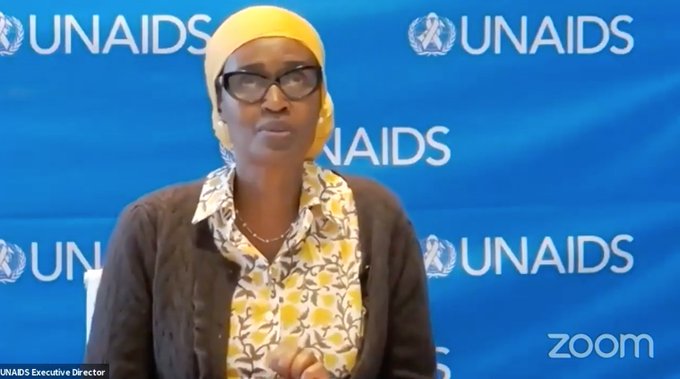UNAIDS, UNFPA launch fourth annual progress report of Global HIV prevention coalition

Islamabad: The latest progress report of the Global HIV Prevention Coalition shows declines in new HIV infections among adults in several countries.

Overall progress in HIV prevention efforts remains variable and is too slow to reach the 2020 targets committed to at the 2016 United Nations High-Level Meeting on Ending AIDS, said a press release issued here.
“We can’t end AIDS if year after year people continue to become newly infected with HIV,” said Winnie Byanyima, Executive Director of UNAIDS. “This year is a milestone for taking stock of a decade of progress towards ending AIDS by 2030. Sadly, the world has come up short against the commitments made to drastically reduce new HIV infections.”

In 2016, United Nations Member States committed to reach a worldwide HIV prevention target of fewer than 500000 new HIV infections among adults by 2020, a 75% reduction from 2010. By the end of 2019, the reduction was just 23%, with 1.7 million people becoming infected with HIV last year.
Launched in 2017, the Global HIV Prevention Coalition aims to bring fresh momentum and clarity to HIV prevention programmes in 28 focus countries—the 28 countries worldwide with the greatest burden of new HIV infections.
The 28 coalition countries have identified and promoted priority programme approaches and interventions, rekindled political commitment for HIV prevention and guided and supported programme implementation.
Progress in reducing new HIV infections in coalition countries is varied. In Eswatini, for example, new HIV infections declined by 64% between 2010 and 2019. In Pakistan, on the other hand, there was a 74% increase. But in 26 coalition countries new HIV infections declined.
The report notes that there has been significant progress in implementing 10 strategic actions set out in the Global HIV Prevention 2020 Road Map, but a number of countries still have difficulties in changing underlying factors that hold back effective HIV prevention programmes, including shortfalls in financing, insufficient action on addressing the obstructive legal, policy and structural barriers that hinder programmes for key and vulnerable populations and the slow adoption of guidance on social contracting.
“To drastically reduce new HIV infections, we have to bridge the gaps and dismantle barriers that deny adolescent girls, young women and key populations access to quality, respectful sexual and reproductive health services. It’s time to end, once and for all, all forms of stigma, discrimination and marginalization that stand in their way,” said Natalia Kanem, Executive Director of the United Nations Population Fund.
The COVID-19 pandemic is an additional challenge to maintaining progress in HIV prevention this year. Of particular concern are disruptions in HIV prevention services such as voluntary medical male circumcision, interrupted access to prevention commodities, including safe injection supplies, the effects of lockdowns on educational and social support services and the interplay between economic downturns and heightened HIV risk behaviours and vulnerability. This year’s report therefore begins to document adaptations that countries are taking to mitigate the potential effects of the COVID-19 pandemic.
The progress report was launched at a virtual meeting of ministers of health from Global HIV Prevention Coalition focus countries at which members took stock of the progress to date, with the aim of charting a way forward for the next five years on the road to ending AIDS by 2030.
“HIV prevention will be at the core to the new global AIDS strategy for the next five years,” added Ms Byanyima. “Together with the United Nations Population Fund and the rest of the UNAIDS Joint Programme, we will support the Global HIV Prevention Coalition to reach our ultimate goal of zero new HIV infections.”





